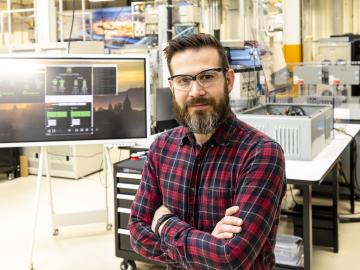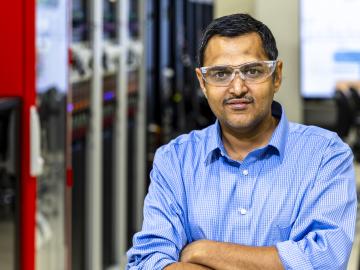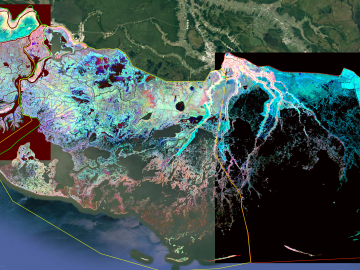
Filter News
Area of Research
- Advanced Manufacturing (2)
- Biological Systems (2)
- Biology and Environment (48)
- Computational Engineering (1)
- Computer Science (6)
- Electricity and Smart Grid (1)
- Energy Science (63)
- Fusion and Fission (8)
- Fusion Energy (9)
- Isotopes (1)
- Materials (45)
- National Security (12)
- Neutron Science (14)
- Nuclear Science and Technology (2)
- Quantum information Science (3)
- Supercomputing (25)
- Transportation Systems (1)
News Topics
- (-) Bioenergy (31)
- (-) Chemical Sciences (24)
- (-) Clean Water (10)
- (-) Environment (62)
- (-) Fusion (15)
- (-) Grid (21)
- (-) Machine Learning (20)
- (-) Nanotechnology (13)
- (-) Quantum Science (19)
- (-) Transportation (30)
- 3-D Printing/Advanced Manufacturing (36)
- Advanced Reactors (10)
- Artificial Intelligence (38)
- Big Data (17)
- Biology (29)
- Biomedical (12)
- Biotechnology (7)
- Buildings (14)
- Composites (8)
- Computer Science (58)
- Coronavirus (4)
- Critical Materials (7)
- Cybersecurity (14)
- Education (3)
- Emergency (1)
- Energy Storage (29)
- Exascale Computing (17)
- Fossil Energy (2)
- Frontier (21)
- High-Performance Computing (33)
- Hydropower (3)
- Irradiation (2)
- Isotopes (12)
- Materials (59)
- Materials Science (38)
- Mathematics (2)
- Mercury (3)
- Microelectronics (2)
- Microscopy (12)
- Molten Salt (2)
- National Security (21)
- Neutron Science (53)
- Nuclear Energy (41)
- Partnerships (24)
- Physics (20)
- Polymers (6)
- Quantum Computing (12)
- Security (5)
- Simulation (29)
- Software (1)
- Space Exploration (10)
- Summit (18)
Media Contacts

Steven Campbell can often be found deep among tall cases of power electronics, hunkered in his oversized blue lab coat, with 1500 volts of electricity flowing above his head. When interrupted in his laboratory at ORNL, Campbell will usually smile and duck his head.

In a finding that helps elucidate how molten salts in advanced nuclear reactors might behave, scientists have shown how electrons interacting with the ions of the molten salt can form three states with different properties. Understanding these states can help predict the impact of radiation on the performance of salt-fueled reactors.

ORNL will lead three new DOE-funded projects designed to bring fusion energy to the grid on a rapid timescale.
To better understand important dynamics at play in flood-prone coastal areas, Oak Ridge National Laboratory scientists working on simulations of Earth’s carbon and nutrient cycles paid a visit to experimentalists gathering data in a Texas wetland.

Sreenivasa Jaldanki, a researcher in the Grid Systems Modeling and Controls group at the Department of Energy’s Oak Ridge National Laboratory, was recently elevated to senior membership in the Institute of Electrical and Electronics Engineers, or IEEE.

ORNL’s Fulvia Pilat and Karren More recently participated in the inaugural 2023 Nanotechnology Infrastructure Leaders Summit and Workshop at the White House.

ORNL has been selected to lead an Energy Earthshot Research Center, or EERC, focused on developing chemical processes that use sustainable methods instead of burning fossil fuels to radically reduce industrial greenhouse gas emissions to stem climate change and limit the crisis of a rapidly warming planet.

Using light instead of heat, researchers at ORNL have found a new way to release carbon dioxide, or CO2, from a solvent used in direct air capture, or DAC, to trap this greenhouse gas. The novel approach paves the way for economically viable separation of CO2 from the atmosphere.

In 1993 as data managers at ORNL began compiling observations from field experiments for the National Aeronautics and Space Administration, the information fit on compact discs and was mailed to users along with printed manuals.

The Department of Energy’s Oak Ridge National Laboratory announced the establishment of the Center for AI Security Research, or CAISER, to address threats already present as governments and industries around the world adopt artificial intelligence and take advantage of the benefits it promises in data processing, operational efficiencies and decision-making.


